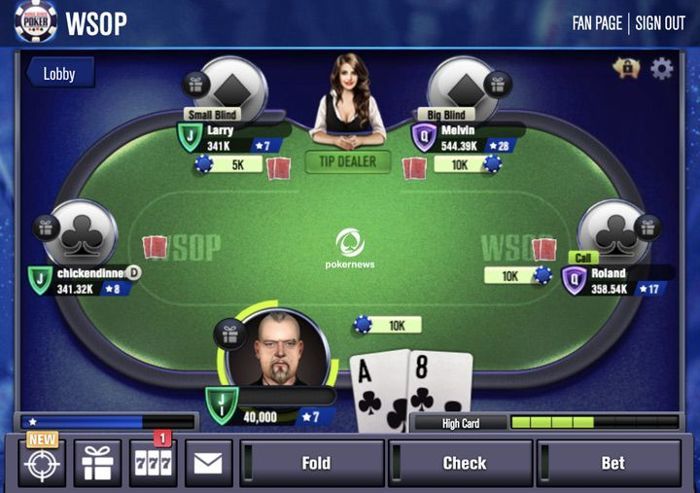Texas Holdem Poker Small Und Big Blind
Mark Poker Articles, Poker Rules
This article is a part of the Poker Rules series.
The small blind is generally half the amount of the big blind, although this stipulation varies from room to room and can also be dependent on the game being played. In a '$1/$2' Texas holdem game. There are two blinds that need to be posted; the small blind and the big blind. The small blind is the first player to the left of the dealer button. This player will post $5. The player to his left (and two seats to the left of the dealer button) is the big blind.
The big blind is a predetermined amount placed by the player to the left of the dealer, the small blind is half that. So say the guy to the left of the dealer place a 4 dollar big blind, the small would be 2. As the dealer chip is passed so is the duty of placing the blinds. A big blind is a mandatory bet used in poker variations that typically don't have antes, such as Texas Hold 'Em. It is paid by the player two seats to the left of the dealer or the dealer button. The player one seat to the left of the button pays a small blind that is usually half the big blind's size.
Step 3: The Texas Hold’em No Limit Gameplay:
In my previous post in this series I described the different Texas Hold’em hands and how they rank against each other. We are now ready to move on to the actual Texas Hold’em game and how it’s played. In Texas Hold’em two players – the Big Blind and the Small Blind – are required to place bets (known as blinds) in the pot (the amount of money to be won in any single completed hand) before any cards are dealt. This means that in Texas Hold’em there will always be money to win in a hand. The dealer button rotates clockwise after each completed hand, and is used to represent the player holding the dealer position. The position of the dealer button also determines the position of the Big and Small Blind as the Small Blind is the player to the immediate left of the dealer and the Big Blind is the player to the left of the Small Blind (see the figure below). In online poker you don’t have to worry about the position of the dealer and Big and Small Blinds since this is all taken care of automatically by the poker software.
A Texas Hold’em hand begins with the dealer dealing one card face down in a clockwise manner to all the players at the table starting with the player to the immediate left of the Big Blind. Then the dealer deals one more card to each player in the same way.
When all players have two face down cards (known as hole or pocket cards) the first betting round (also known as the preflop betting round) begins, starting with the player to the immediate left of the Big Blind and continuing clockwise around the table. In No Limit Hold’Em the smallest possible bet is the same size as the Big Blind; there is no upper limit to bets. When it’s your turn to bet and you are not the Big Blind you have 3 options: Call, Raise or Fold.
- By calling you bet the same amount as the biggest bet made by the players acting before you.
- By raising you call the biggest bet made by the players acting before you and then place an additional bet over the top.
- By folding you choose not to continue playing your pocket cards, and you will be out of the game until the next hand starts.
When you are the Big Blind in the first betting round and nobody has made a bet larger than you big blind you can choose to Check, Raise or Fold. By checking you simply pass on the turn to the next player without making any bet. This is possible since you have already paid the Big Blind into the pot.
When the big blind has completed his/hers turn, the first three community cards – known as the flop- are dealt face up in the middle of the table. The second betting round then starts with the first player to the left of the dealer who is still playing the hand and continues clockwise. The second betting round ends with the dealer.

Texas Holdem Poker Small Und Big Blinds
The next and 4th community card – known as the turn or the 4th street – is dealt face up and a third betting round follows in the same manner as the second betting round.

Finally the 5th and last community card – known as the river or the 5th street – is dealt face up and a fourth betting round follows in the same manner as the second and third betting rounds. If a player bets during the fourth betting round and all the other players remaining fold then he or she wins the pot without having to show his/hers pocket cards. If one or more players call then a showdown, where all remaining players reveal their pocket cards, determines the winner of the pot according to the hand ranking scheme I described earlier. So there you have it, the Texas Hold’em No Limit gameplay in all its simplicity. There are a couple of extra subtle details regarding special circumstances that may occur during the game, but I will go more into detail with these later.
My next post in this series will deal with choosing which starting hands to play depending on which position you are in relative to the dealer button.
This post belong to the following series:
You could be posting your articles on the Poker Bankroll Blog. Read all about it here.